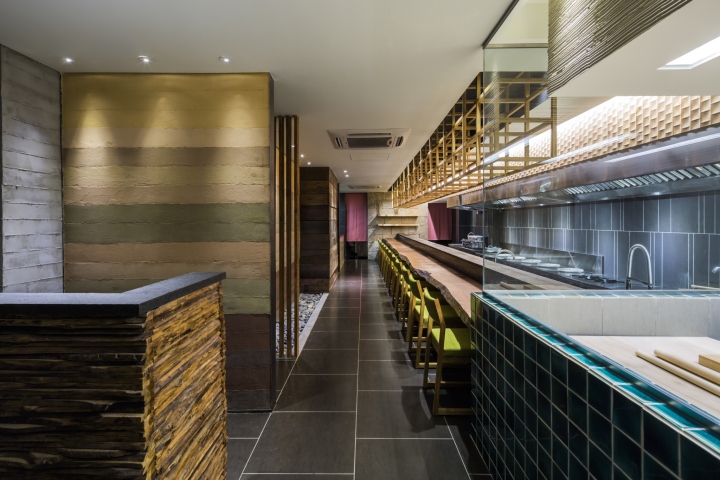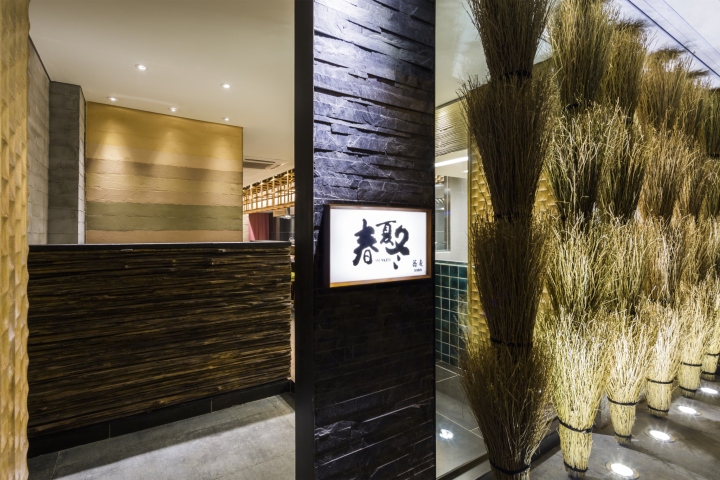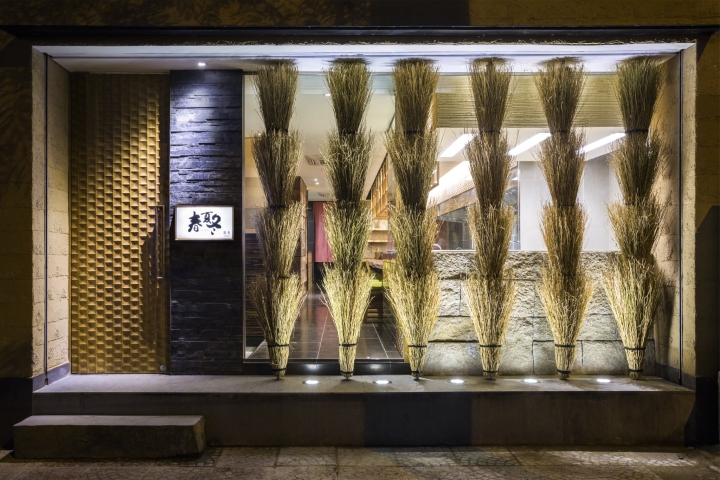


“Syunkato Soba” opened along Le Thanh Ton Street in the center of Ho Chi Minh City, which is popular for Japanese residents. The shop is the first restaurant in the city specializing in soba noodles, and is the second branch shop of the Japanese restaurant “Syunkato”, which opened in 2012.

“Syunkato” is well-reputed among Japanese residents as a restaurant to serve authentic Japanese food in a sophisticated space and a relaxing private dining room, and is widely used for business meetings and family gathering. Under the same concept as the first restaurant to provide an authentic Japanese taste (which is often hard to find in foreign countries), the owner, who is also a soba master, opened the much-awaited soba restaurant as his second shop.

The site is located in a cluttered town with busy traffic, surrounded by overflowing people, cars, and bikes. Upon entering the restaurant, away from such bustle of the city, a quiet and comfortable space welcomes the guests as if entering a different world. Our intention was the creation of a space for people to feel “Japan” by eating soba cuisine prepared by a soba master,

The existing building has a narrow shape with about 5m width and 25m depth. The first floor consists of the bar with a 10m counter made of solid wood from Africa, the soba making area surrounded by glass walls that faces the main street, the kitchen at the back and the counter kitchen connected to it. In order to provide a relaxing atmosphere for dining, the ceiling height was lowered from the previous 3.6m to 2.4m. The see-through, wooden hanging frame above the counter ensures the openness of the space, while properly dividing the guest tables and the kitchen. The vintage lumber, the painted walls resembling rammed earth, and stone masonry walls create a Japanese atmosphere.

The second floor consists of the tables and private dining room. In order to efficiently place tables in a 5m wide shop, millimeter-scale fine adjustment is necessary for compromising sizes such as the tables and isle width. Arrangement of the tables and dividing them are of the utmost importance since spacing is directly linked to comfortability. In order to avoid crossing the lines of vision between customers or an excessive feeling of enclosure, the see-through wooden partitions with various shapes and finishes are used to ensure comfort. The only private dining room is located at the backmost location of the shop, dynamically surrounded by large solid wood boards and granite, creating a uniqueness in the restaurant.

Impactful pillars made of bundles of sticks, resembling blooms, are designed for the façade in order to stand out from a crowded field. The exterior walls are roughly-finished plaster with the appearance of geological layers, with the purpose of expressing simplicity and dynamism. For the interior decoration, high quality materials were used unprocessed as much as possible to maximize the expression of the textures, strength and crudeness of the materials in the finishes.

A pure space was pursued by using a straightforward expression of the aspects of each material, such as stones, old wood, solid wood boards, rope, clay walls, and cement. Excessive decoration was avoided, while focusing on choosing simpler and cruder materials in order to leave the cuisine as the central player. Despite the use of common domestic materials in Vietnam, we believe that they were upgraded into sophisticated, high-quality finishing materials through originality and ingenuity, such as demonstrated in the processing methods, presentation, and combinations.
Designed by DESIGN & CREATIVE ASSOCIATES Co., ltd.
Photography by Hiroyuki Oki
















Add to collection










